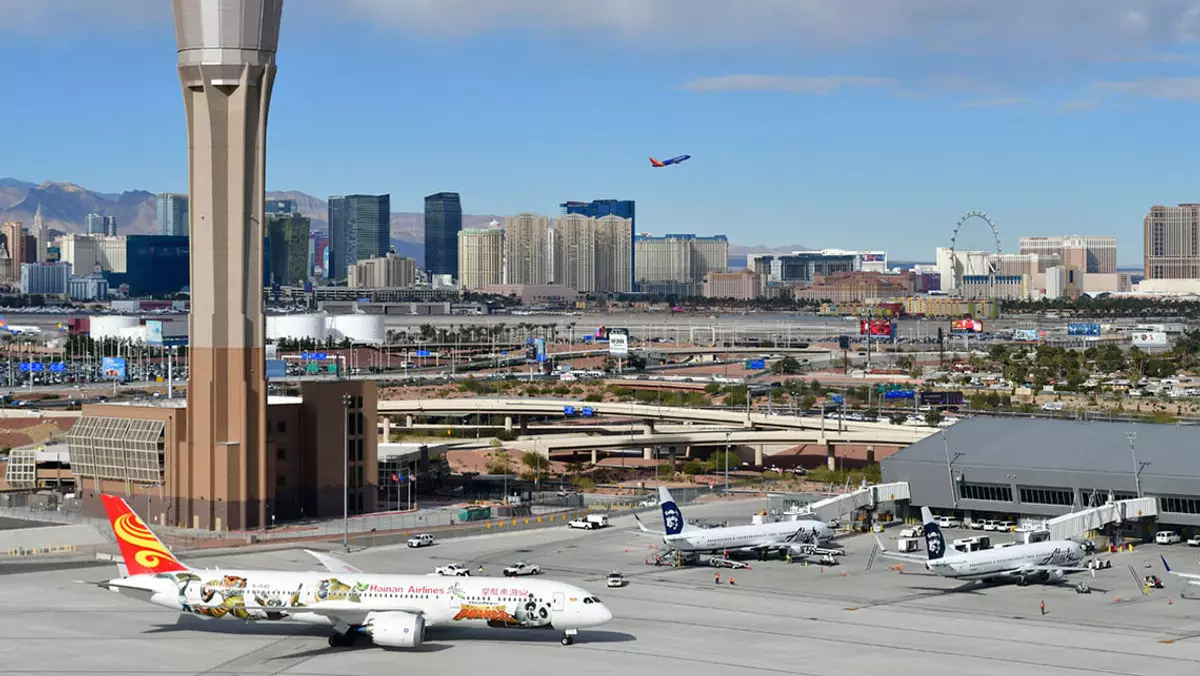In the dynamic world of aviation, leadership shapes not only the efficiency of airports but also their ability to adapt and innovate amidst ever-changing challenges. Rosemary Vassiliadis, a trailblazing figure in Southern Nevada’s aviation sector, has announced her retirement after nearly three decades of unwavering dedication. Her departure marks a pivotal moment as the region prepares for a new chapter—one defined by ambitious expansion projects and strategic enhancements to maintain its competitive edge.
Vassiliadis’s tenure has been marked by resilience, ingenuity, and an unwavering commitment to community service. As the first woman to lead the Clark County Airport System, she broke barriers and set a precedent for leadership driven by forward-thinking and inclusivity. Her efforts have laid a sturdy foundation for future growth, but her departure also prompts a reevaluation of how the region can sustain its upward trajectory.
Refurbishing the Heart of Southern Nevada’s Air Travel
Reid International Airport (formerly McCarran), now known as Harry Reid Airport, stands at the heart of Southern Nevada’s bustling economy. With over 58 million passengers served annually, it ranks among the busiest in the world. Yet, as Vassiliadis prepares her exit, the airport’s expansion projects highlight efforts to elevate its capacity and user experience.
A major focus is the addition of 26 new gates at Terminal 1, aiming to streamline passenger flow and modernize outdated infrastructure. While timelines remain vague, the upgrades promise sophisticated pier designs and more efficient gate layouts that reflect contemporary standards. These improvements are essential to accommodate continued growth, especially as Las Vegas cements its reputation as a world-class destination for entertainment, conventions, and sporting events.
Further plans include constructing a new, reliever airport about 30 miles south-west of Reid. This strategic move aims to reduce congestion and provide tailored services for general aviation, business travelers, and regional flights. Although post-implementation details are yet to be finalized, this initiative demonstrates a bold vision for the future—one that balances capacity with sustainability and community integration.
Innovating for the Future of Aviation
Under Vassiliadis’s leadership, Reid Airport became a showcase for technological advancements in airport security and passenger processing. Designated as the nation’s only Innovation Airport by the TSA in 2019, Reid tested groundbreaking screening technologies, setting a precedent that many airports now aspire to replicate.
The airport’s successful adoption of automated screening lanes, UV-C sanitization systems, and credential verification technology underscore its commitment to health, safety, and operational efficiency. Moreover, proactive measures to combat human trafficking and multilingual signage initiatives reflect a broader strategy—building a secure, accessible, and inclusive environment for all travelers.
These innovations reveal an institutional mindset that values continuous improvement, particularly during crises. Vassiliadis’s leadership in navigating the post-9/11 security landscape and the COVID-19 pandemic underscores her pragmatic approach—prioritizing safety without sacrificing service quality.
Embracing Change: The Road Ahead for Clark County’s Air Travel Ecosystem
As the region gears up for new infrastructural developments, some might question whether these plans are aspirational or realistic. The construction of a new reliever airport promises relief and flexibility, but it also demands substantial funding, strategic planning, and community buy-in. Success hinges on whether the new facility can operate seamlessly within the existing ecosystem and truly meet the needs of regional travelers and businesses.
Meanwhile, ongoing upgrades to Reid’s passenger facilities showcase a relentless pursuit of excellence. Modernizing the terminal’s layout, introducing AI-driven security, and enhancing passenger amenities are not mere aesthetics—they’re vital to maintaining Las Vegas’s reputation as a premier travel destination.
Yet, the most significant challenge lies in ensuring that these improvements keep pace with demographic shifts, technological advances, and changing traveler expectations. The question remains: will the new leadership inherit a vision balanced between innovation and practicality? The answer depends greatly on how well they capitalize on the foundation Vassiliadis meticulously built.
A Future Shaped by Vision, Not Just Infrastructure
Ultimately, the trajectory of Nevada’s aviation future hinges on leadership that is both daring and strategic. The investments in infrastructure and technology are impressive, but their true worth lies in whether they translate into tangible benefits for travelers, local communities, and the economy at large.
Vassiliadis’s departure is not just the end of an era; it is an invitation for new leaders to innovate boldly, challenge the status quo, and shape an airport system that is resilient, efficient, and customer-centric. Providentially, Las Vegas’s identity as an entertainment capital makes it uniquely positioned to leverage its airport as an even more powerful gateway to the world—if its future leaders are willing to dream big and act decisively.


Leave a Reply